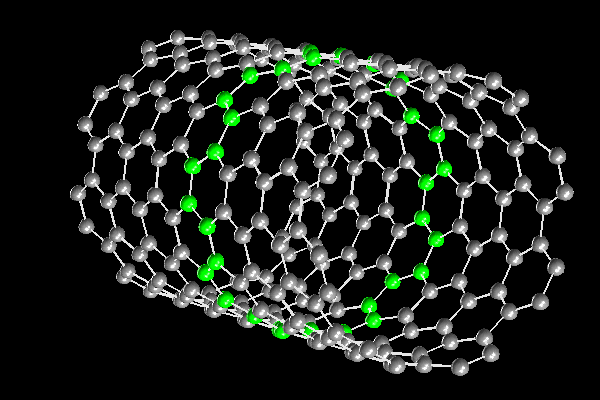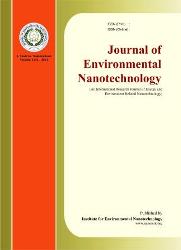 Various learned-bodies and even Nobel Laureates have over the past recent years identified a range of Grand Challenges that Humanity must address in the coming decades in order to ensure the survival of our way of life - tackling the root causes of climate change whilst meeting huge increases in energy demand, reducing our impact on the wider environment, exploiting our natural resources more efficiently, ensuring adequate supplies of safe drinking water and defence against terrorism are just a few of these key challenges. Nanoporous carbons have long played a role in the areas associated with these Grand Challenges (e.g. purification of drinking water; capture of volatile organic compounds from industry; gas masks), but they have an ever larger role to play into the future. For example, nanoporous carbons are at the core of Lithium-ion batteries, which are to be used to substantially increase the range of the next generation of hybrid vehicles - this is essential to reducing CO emissions from transport, which accounts for a third of all such emissions. These batteries and nanoporous carbon-based supercapacitors are being developed for energy storage from intermittent renewable sources such as wind too8 - such energy storage is essential to large scale use of renewable energy. Nanoporous carbons are also a serious alternative for separating CO2 from exhaust gas streams, which is part of the so-called 'carbon capture and sequestration' strategy that many are pursuing in an effort to ensure the future use of coal as a fuel. Finally, impregnated nanoporous carbons may be effective hydrogen storage media - the current absence of any such technology is a major barrier to the realisation of the 'hydrogen economy'. So what is this magical material we call 'nanoporous carbon'? Some may recognise the more old fashion terms of 'activated carbon' or 'microporous carbon' - nanoporous carbon encompass these non-crystalline carbonaceous materials as well as more novel forms of porous carbon such as carbon nanotubes and templated carbons. Nanoporous carbons are highly porous carbon-dominated materials that almost always contain small quantities of heteroatoms such as oxygen, hydrogen, and, depending on their origin, nitrogen, sulphur and even 'heavy metal' atoms. The pore 'widths' in these materials typically range from less than a nanometre through to 10s of nanometres and even larger. The size and geometry of the pores combined with the nature of the solid carbon skeleton means nanoporous carbons have large surface areas11 - typically 1 to 15 tennis courts worth per gram of material - compared to many other porous materials. The pore sizes and large surface areas, the ease with which they can both be modified, and the relative inertness of nanoporous carbon are just a few of the reasons why it is such a popular material.
Various learned-bodies and even Nobel Laureates have over the past recent years identified a range of Grand Challenges that Humanity must address in the coming decades in order to ensure the survival of our way of life - tackling the root causes of climate change whilst meeting huge increases in energy demand, reducing our impact on the wider environment, exploiting our natural resources more efficiently, ensuring adequate supplies of safe drinking water and defence against terrorism are just a few of these key challenges. Nanoporous carbons have long played a role in the areas associated with these Grand Challenges (e.g. purification of drinking water; capture of volatile organic compounds from industry; gas masks), but they have an ever larger role to play into the future. For example, nanoporous carbons are at the core of Lithium-ion batteries, which are to be used to substantially increase the range of the next generation of hybrid vehicles - this is essential to reducing CO emissions from transport, which accounts for a third of all such emissions. These batteries and nanoporous carbon-based supercapacitors are being developed for energy storage from intermittent renewable sources such as wind too8 - such energy storage is essential to large scale use of renewable energy. Nanoporous carbons are also a serious alternative for separating CO2 from exhaust gas streams, which is part of the so-called 'carbon capture and sequestration' strategy that many are pursuing in an effort to ensure the future use of coal as a fuel. Finally, impregnated nanoporous carbons may be effective hydrogen storage media - the current absence of any such technology is a major barrier to the realisation of the 'hydrogen economy'. So what is this magical material we call 'nanoporous carbon'? Some may recognise the more old fashion terms of 'activated carbon' or 'microporous carbon' - nanoporous carbon encompass these non-crystalline carbonaceous materials as well as more novel forms of porous carbon such as carbon nanotubes and templated carbons. Nanoporous carbons are highly porous carbon-dominated materials that almost always contain small quantities of heteroatoms such as oxygen, hydrogen, and, depending on their origin, nitrogen, sulphur and even 'heavy metal' atoms. The pore 'widths' in these materials typically range from less than a nanometre through to 10s of nanometres and even larger. The size and geometry of the pores combined with the nature of the solid carbon skeleton means nanoporous carbons have large surface areas11 - typically 1 to 15 tennis courts worth per gram of material - compared to many other porous materials. The pore sizes and large surface areas, the ease with which they can both be modified, and the relative inertness of nanoporous carbon are just a few of the reasons why it is such a popular material.
Welcome to Nanoient its Tuesday 1st of April 2025




